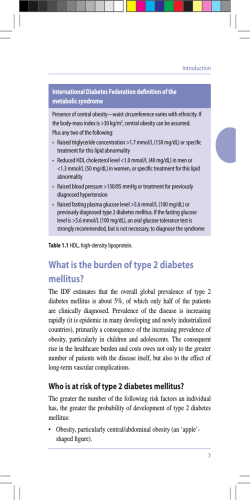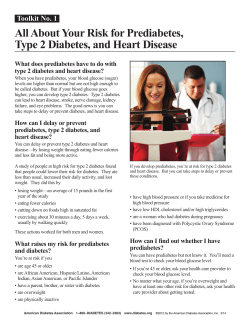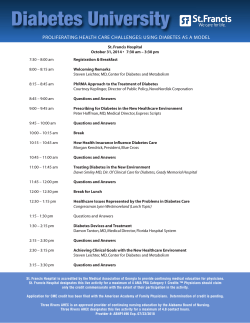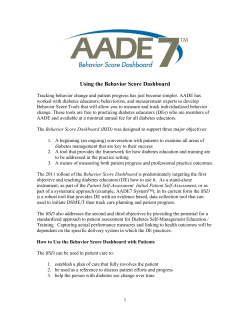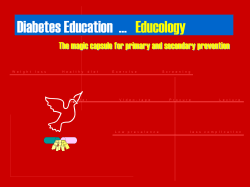
Oral Glucose Tolerance Test For further information, please speak with your doctor
Oral Glucose Tolerance Test For further information, please speak with your doctor As this brochure contains only general information, professional advice from your medical practitioner should be sought before applying the information in this brochure to particular circumstances. You should not rely on any information contained in this brochure without first obtaining professional advice. Specialist Diagnostic Services Pty Ltd (ABN 84 007 190 043) t/a QML Pathology PUB/MR/1008, version 1 (Aug-11) The oral glucose tolerance test (OGTT) measures the time it takes for glucose to leave your blood after consuming a glucose drink. How is the OGTT carried out? Use of the OGTT in pregnancy The test is performed at QML Pathology collection centres and involves drinking a glucose solution at the collection centre and having blood taken at set times. It is important to contact the collection centre prior to your test to be given detailed instructions on how to prepare for it. Following these instructions will help avoid a false result. The test will take approximately 2.5 hours (half an hour rest prior to test and two hours test time). Some women will develop diabetes in pregnancy (gestational diabetes). Women are generally screened for gestational diabetes when they are between 26 and 28 weeks pregnant by having a modified OGTT. What do the results mean? Results of the OGTT not only diagnose diabetes but can determine if you have impaired fasting glucose (IFG) or impaired glucose tolerance (IGT). Having either of these conditions indicates a significantly increased risk of developing diabetes in future. Diabetes is diagnosed when either the fasting or the 2 hour glucose is within the diabetes range AND you have diabetes symptoms OR you have had a severely elevated blood glucose on a separate occasion. However, if both the fasting and the 2 hour glucose are within the diabetes range, then this will confirm diabetes mellitus in its own right. IFG is diagnosed when your fasting glucose level is greater than or equal to 6.1 mmol/L and less than 7.0 mmol/L and the 2 hour blood test results after your glucose drink is less than 7.8 mmol/L. IGT is diagnosed when your fasting blood glucose level is less than 7.0 mmol/L and your 2 hour result after your glucose drink is greater than 7.8 mmol/L but less than 11.1 mmol/L. Please note that values for diagnosing diabetes in pregnancy (gestational diabetes) are different from the values for diagnosing type 2 diabetes as listed above. Women who have had diabetes in pregnancy are at risk of developing type 2 diabetes in the future and should have a follow-up OGTT 6-8 weeks after the birth of their baby, then regular follow-up as indicated by the results of this test. How often should I have an OGTT? Anyone at high risk of developing type 2 diabetes should be checked for diabetes. If you are diagnosed with either IFG or IGT it is important to have the glucose tolerance test repeated at 12 months initially, then as indicated by the results. Are there fees involved? Medicare will provide a rebate for the test providing all criteria and guidelines are met. The Diabetes Care Clinic QML Pathology has a Diabetes Care Clinic for patients diagnosed with diabetes. If you would like to enrol in the program, speak to your GP about a referral. For more information, go to www.diabetes.medway.com.au.
© Copyright 2026




